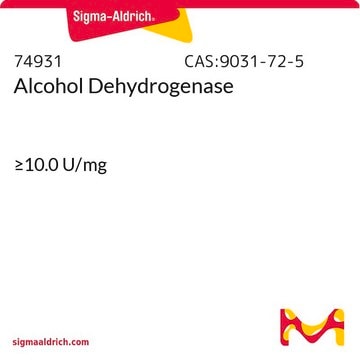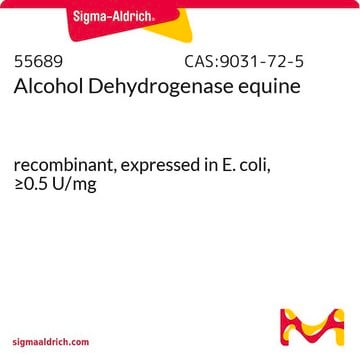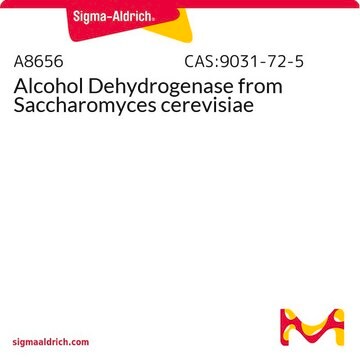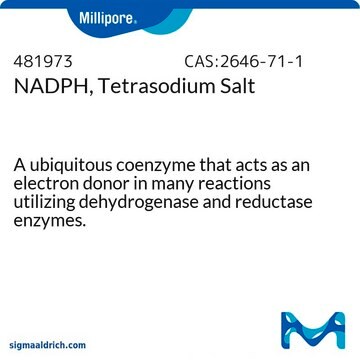49641
Alcohol Dehydrogenase, recombinant
≥500 U/mL
Synonyme(s) :
Alcohol:NADP+ oxidoreductase
About This Item
Produits recommandés
Produit recombinant
expressed in E. coli
Forme
liquid
Activité spécifique
≥500 U/mL
Technique(s)
cell based assay: suitable
Couleur
light brownish-yellow to brown-green
Adéquation
suitable for molecular biology
Application(s)
life science and biopharma
Température de stockage
−20°C
Vous recherchez des produits similaires ? Visite Guide de comparaison des produits
Description générale
Alcohol dehydrogenase has a homodimeric structure with a co-enzyme binding domain at the C-terminal and an N-terminal catalytic domain. The active site is located at the interdomain cleft. Binding of NAD+ in the active site causes conformational changes that create the binding site for the alcohol substrate.
Application
Actions biochimiques/physiologiques
Définition de l'unité
Mention d'avertissement
Warning
Mentions de danger
Conseils de prudence
Classification des risques
Eye Irrit. 2
Code de la classe de stockage
10 - Combustible liquids
Classe de danger pour l'eau (WGK)
WGK 3
Point d'éclair (°F)
Not applicable
Point d'éclair (°C)
Not applicable
Équipement de protection individuelle
Eyeshields, Gloves
Certificats d'analyse (COA)
Recherchez un Certificats d'analyse (COA) en saisissant le numéro de lot du produit. Les numéros de lot figurent sur l'étiquette du produit après les mots "Lot" ou "Batch".
Déjà en possession de ce produit ?
Retrouvez la documentation relative aux produits que vous avez récemment achetés dans la Bibliothèque de documents.
Les clients ont également consulté
Notre équipe de scientifiques dispose d'une expérience dans tous les secteurs de la recherche, notamment en sciences de la vie, science des matériaux, synthèse chimique, chromatographie, analyse et dans de nombreux autres domaines..
Contacter notre Service technique









